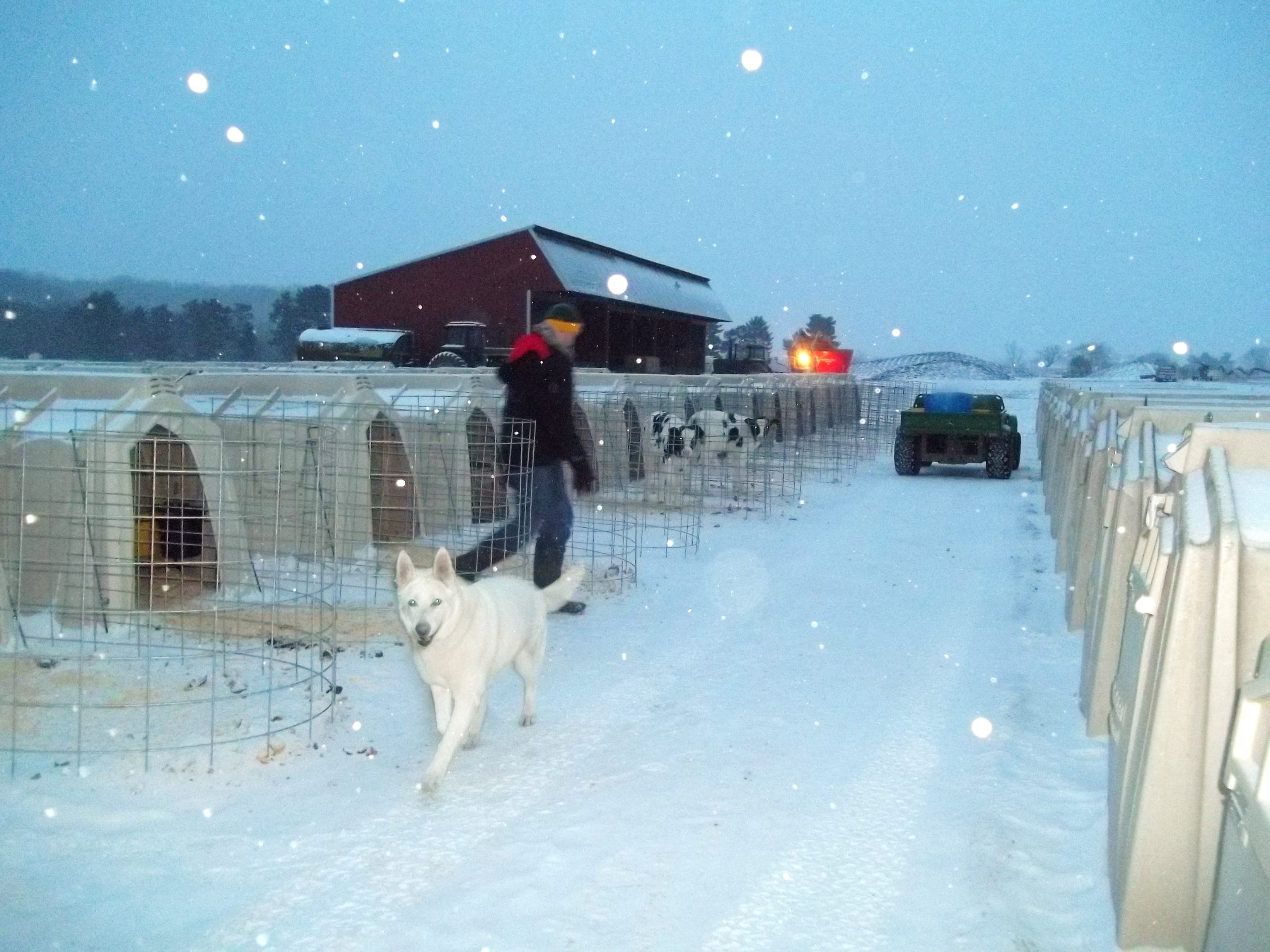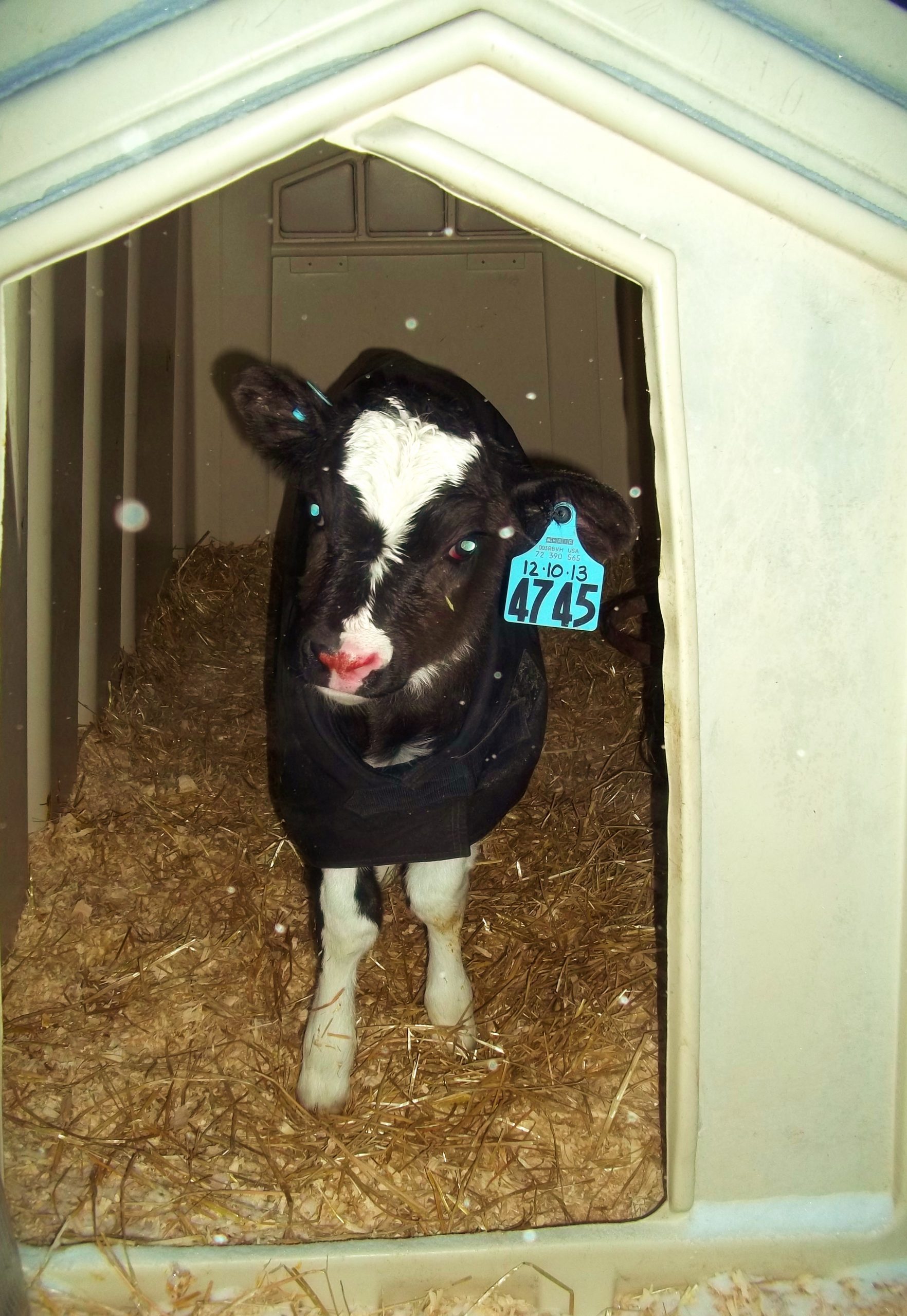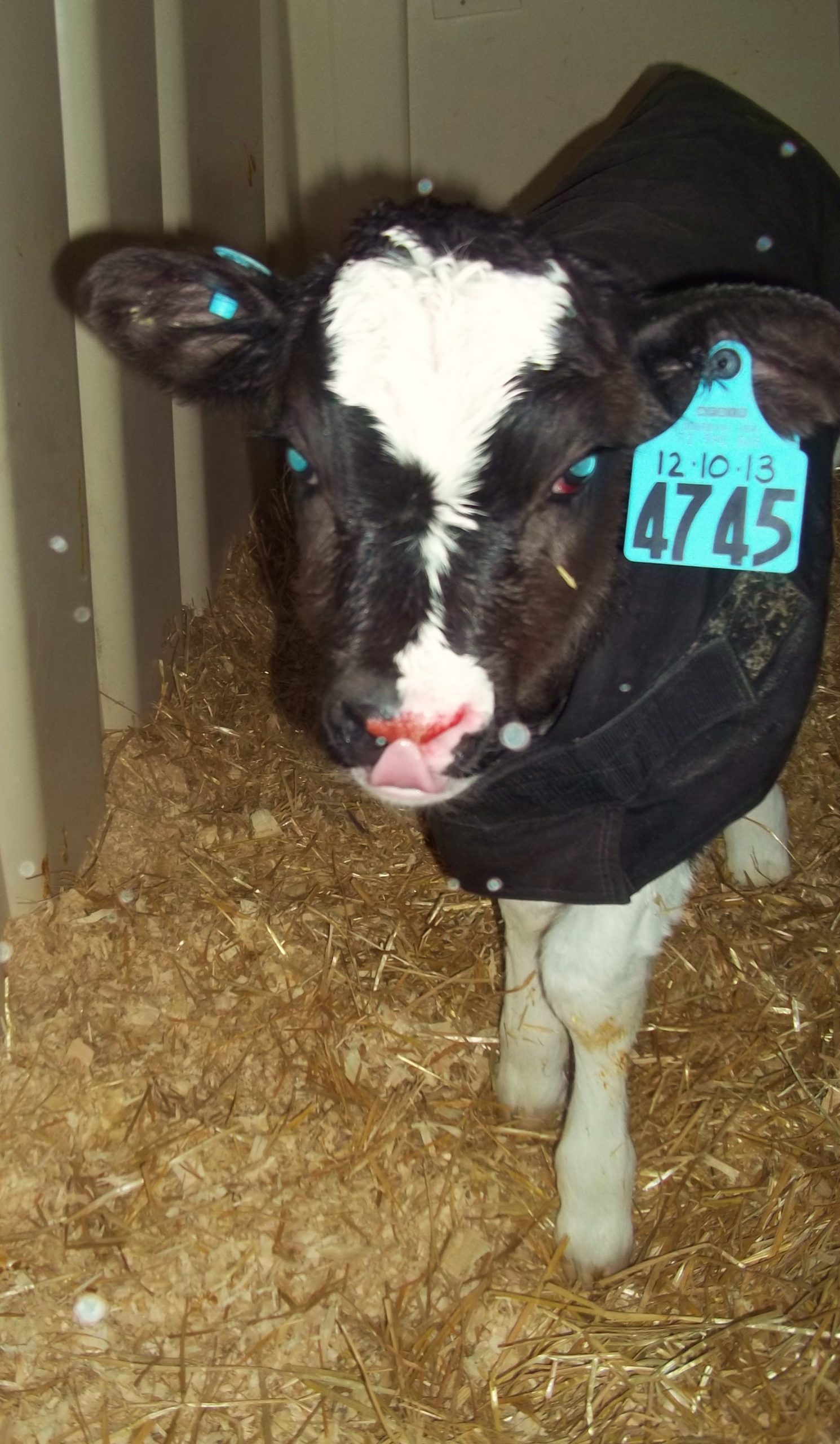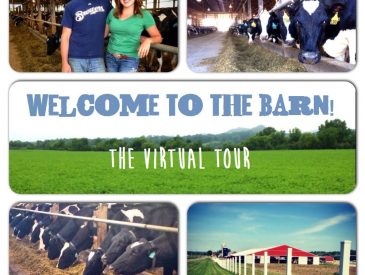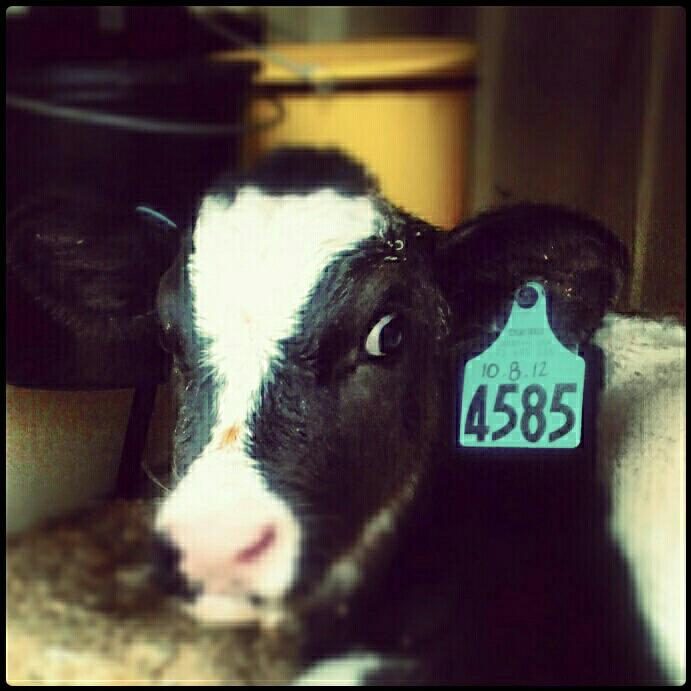
Let’s face it, baby calves are adorable. Who wouldn’t want the job of feeding these babes every day? I’m here to tell you the job is tougher than it looks. My first job as a kid was feeding calves with my grandma and it wasn’t always easy. Feeding and caring for baby calves takes time and patience, just as it does with people. Grandma always said “Women make the best calf feeders because they are more patient than men”. (I think there is some truth to this…….) Here at the farm, calves are housed in hutches. It is like their own, personal house that provides warmth, shelter and adequate ventilation. It is important that the babies are isolated for the first two months of life in order to prevent spread of disease and illness. The hutches are bedded once a week or as needed.
When a baby calf is born the first step is to feed it colostrum. Colostrum is the mother’s first milking and contains antibodies needed to protect the calf against disease. The colostrum must be fed to the calf within two hours of life to ensure the transfer of antibodies. New mothers do not always produce quality colostrum, so at our farm we use a colostrum replacement. It is a powder that is simply mixed with hot water and fed in a bottle. The newborn is also given necessary vaccinations and ear tags with an identification number.
After being fed colostrum and moved to a hutch, the newborn joins the regular feeding schedule with the other calves. The calves are fed twice a day, 5 a.m. and 5 p.m. , with a milk replacer. Similar to the colostrum replacer, it is a powder that is mixed with hot water and fed in a bottle.
Now, you might be thinking “Well, this doesn’t sound so bad, I thought you said this was a tough job.”. Things are about to get tricky, folks. You see, calves can’t drink from a bottle their entire life. We have to teach them how to drink from a pail and it isn’t an easy task. This is where the patience comes in. In a perfect world, calves will catch on after 1 to 2 feedings. Other times, it can take 2 to 3 days! There aren’t really any tricks, you just have to give it time. Around this time calves are also introduced to grain and free-choice water. (Free-choice meaning always available) At 6-8 weeks of age, calves are weaned off milk and eventually moved into group pens.
The calves in their group pen
Still don’t think it sounds that tough? Insert Mother Nature. The calf hutches are located outside and the weather can really make feeding calves hard on people. We don’t get to wait for the rain to stop or the wind to cease. If it is 30 below with 20 mph winds, you better buddle up because those calves need to be fed.
It isn’t all bad, there are definitely some perks. Seeing their cute faces everyday is a bonus. Watching them grow, learn and get into trouble; it is all fun. However, it does take a tough person to care for these babies. I am neither patient nor warm-blooded so, I am thankful that my calf duties are limited. My mother-in law and a few helpers take care of the calves and do an excellent job. Can’t you tell? Look at all these happy babies!
